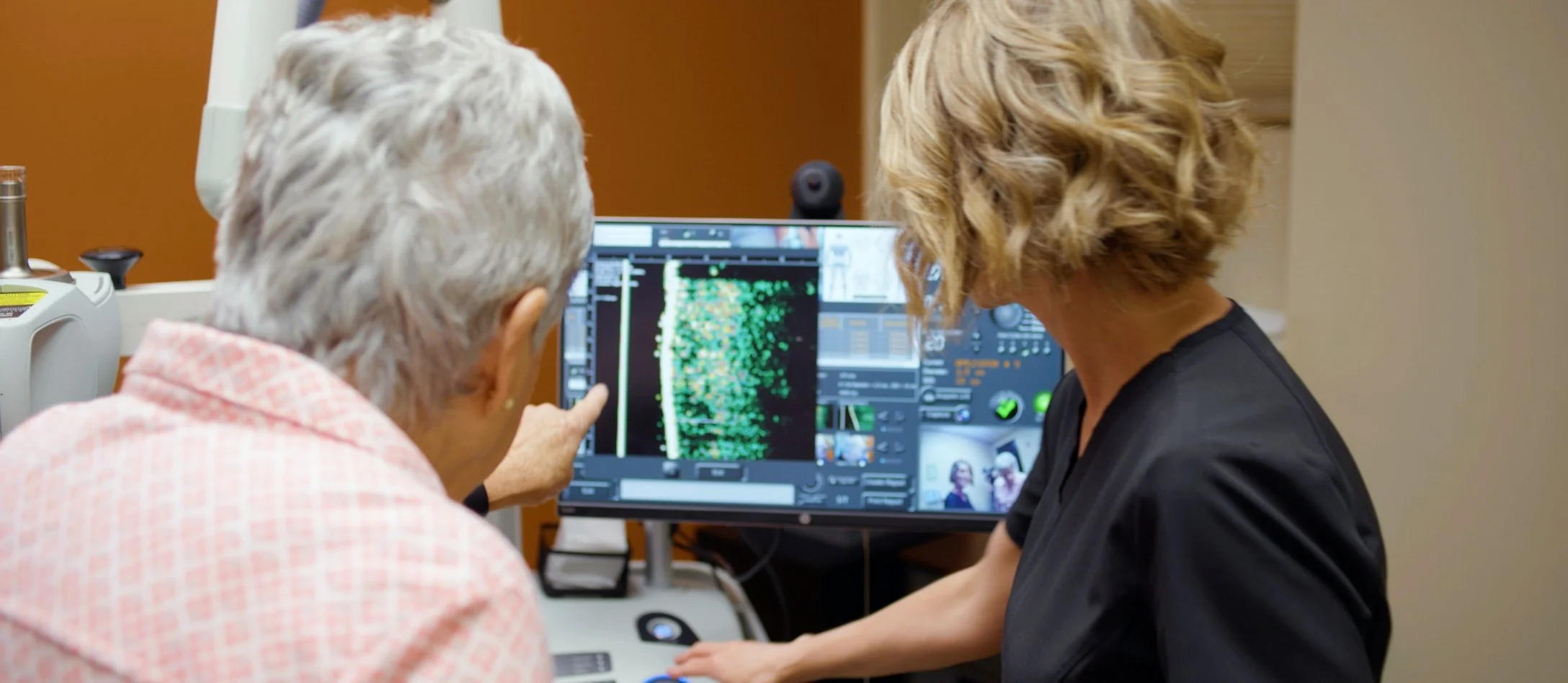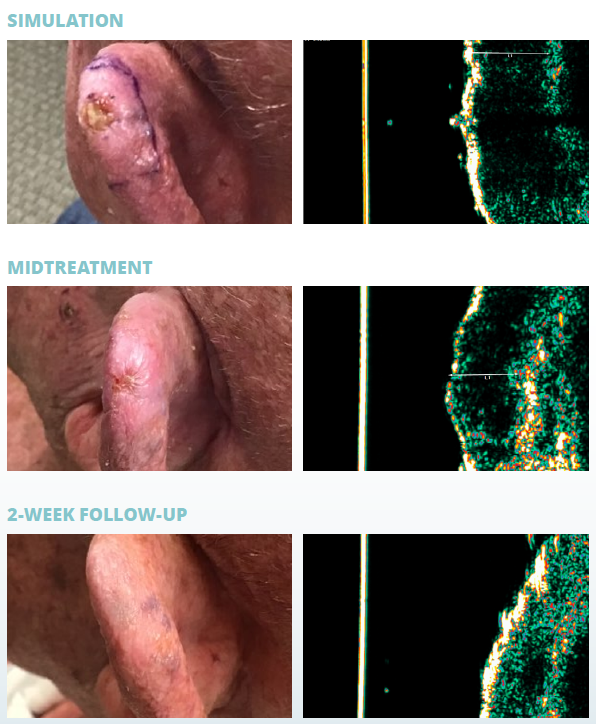MI Skin Center is proud to offer the non-surgical, gold standard treatment for nonmelanoma skin cancer
If you think you might have skin cancer or have recently received a diagnosis requiring treatment, book an appointment with us today. We provide GentleCure (Image-Guided SRT)—the gold-standard, non-surgical treatment for skin cancer. During your initial visit, we’ll go over your pathology report, talk about your treatment goals, and collaborate with you to find the best treatment option for your needs.
Looking to treat skin cancer without surgery?
GentleCure is a gentle, surgery-free treatment that is safe and has a 99%+ cure rate in basal and squamous cell skin cancers. Treatment is done right in the dermatology office over the course of a few weeks using an advanced Image-Guided SRT machine. It is the only skin cancer treatment with ultra-sound imaging that lets you see the cancer on the screen and review the progress made throughout the course of treatment until there are no visible signs of cancer.
What should I expect with this treatment?
GentleCure (Image-Guided SRT) is designed to treat skin cancer without the discomfort and cosmetic issues often associated with surgery. There is no cutting, surgical scarring, or need for reconstructive surgery, and you can maintain your normal daily activities throughout treatment.
At each treatment session, you will sit in a chair and ultrasound gel will be applied to the site of the cancer. Using an imaging wand, we will look at a detailed image of your cancer on screen. you can see the image yourself from the comfort of your chair. We will use that image to measure the size and shape of the tumor, calculate the precise dose of treatment, and define the treatment area.
Once the imaging is complete, the arm of the devise will be placed over the treatment site and the exact dose of x-ray energy will be used to treat the cancer site without harming the healthy tissue around it.
Each treatment session takes about 15 minutes from the time you walk into the door to when you leave the office. You will come back several times a week for short treatment sessions, and in 4-to-7 weeks, treatment will be complete.
Watch our short video
Learn more about the treatment experience and what to expect with GentleCure
(Image-Guided SRT).
See more videos about the GentleCure (Image-Guided SRT) experience.
GentleCure (Image-Guided SRT) has a proven track record that is backed by science & clinical research.
In 2021, chart reviews were conducted for 1632 patients who had Image-Guided SRT to treat one or more early-stage basal or squamous cell skin cancers. Of those patients, 2917 skin cancers in total were treated. The results showed a 99.3% cure rate with Image-Guided SRT, which we believe to be equal to or better than Mohs surgery
In 2022 and 2023, additional studies were published that showed the efficacy and safety of Image-Guided SRT to be superior to non-image-guided forms of radiation therapy across skin cancer types—confirming its use as a first-line treatment for basal and squamous cell skin cancers. This means doctors and patients should give equal consideration to Mohs surgery and surgery-free
Image-Guided SRT as standards of care.
More information about the published research supporting the use of GentleCure (Image-Guided SRT) can be found here.
Why we chose to offer GentleCure (Image-Guided SRT)
There are several different radiation-based treatments available for skin cancer. But the safety, cure rates, and cosmetic outcomes vary based on the treatment technology and clinical protocols used. We chose GentleCure (Image-Guided SRT) because it is the only skin cancer treatment with advanced imaging that lets us see and measure the cancer and adapt the dose to precisely what you need at each stage of treatment. It has also been shown to be the safest and most effective of all radiation-based treatments for skin cancer with superior cosmetic results.
If you are considering radiation therapy to treat your skin cancer, make sure you are getting GentleCure (Image-Guided SRT) with adaptive radiotherapy protocols. It’s the safe, effective, and gentle way to treat skin cancer using the most advance treatment technology available today.
*No two cases of skin cancer are the same, so treatment results may vary from patient to patient. But the pictures to the right are typical of the results seen by patients who have received GentleCure (Image-Guided SRT)
Ruby’s Testimonial
Description: Thirty years ago, Ruby was diagnosed with skin cancer. At that time, her only treatment
option was Mohs surgery. When Ruby was diagnosed with skin cancer again in 2019, she was happy to learn about a surgery-free option called GentleCure (Image-Guided SRT)
Is this treatment covered by insurance?
GentleCure (Image-Guided SRT) is covered by Medicare and most health insurance plans. With most insurance plans, you may have to pay some out-of-pocket cost. That cost will depend on your specific health plan coverage and co-pay policy. Before you commit to a treatment option, we will work with your insurance plan to determine the potential cost to you, so you can make an informed treatment decision. If you are worried about affording treatment, let us know and we can discuss our financial assistance options.
Side Effects and Cosmetic Results
When X-ray energy is used to kill cancer cells, your body will replace the dead cancer cells with healthy tissue over time. There is no surgical scarring and no need for reconstructive surgery. There is, however, a small risk of skin atrophy (thinning of the skin) and pigment changes (changes in the color of the skin) at the treatment site. Other potential side effects may include skin inflammation with redness and swelling at the treatment site. Topical creams or ointments can be used over the course of treatment to minimize these side effects, and the side effects usually go away 2-to 6-weeks after treatment is complete. There is also a risk of alopecia (hairloss) in the treated area only. In the 7 years that patients have been receiving GentleCure (Image-Guided SRT), there have been NO reported cases of secondary skin cancers occuring as a result of treatment.




